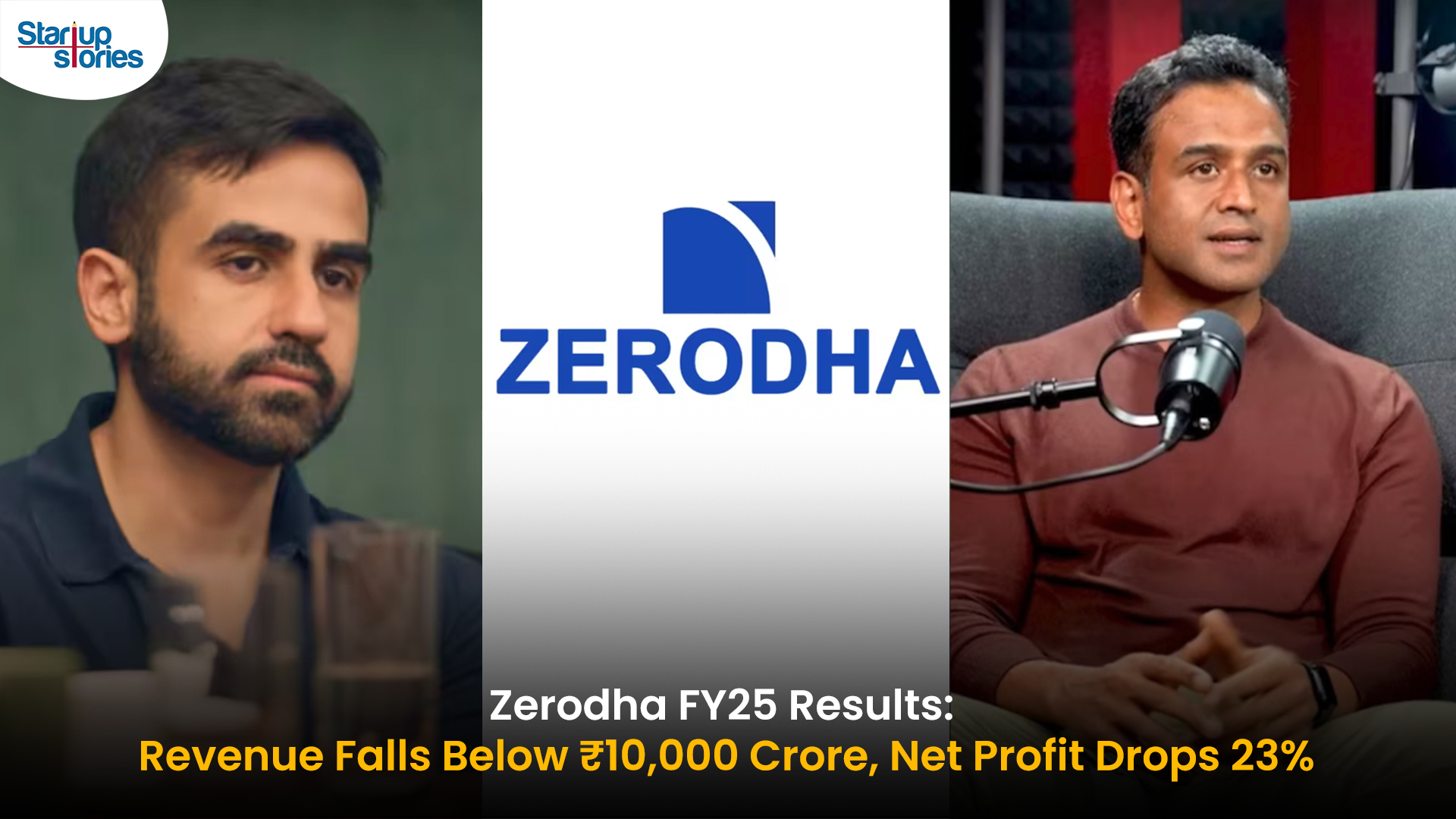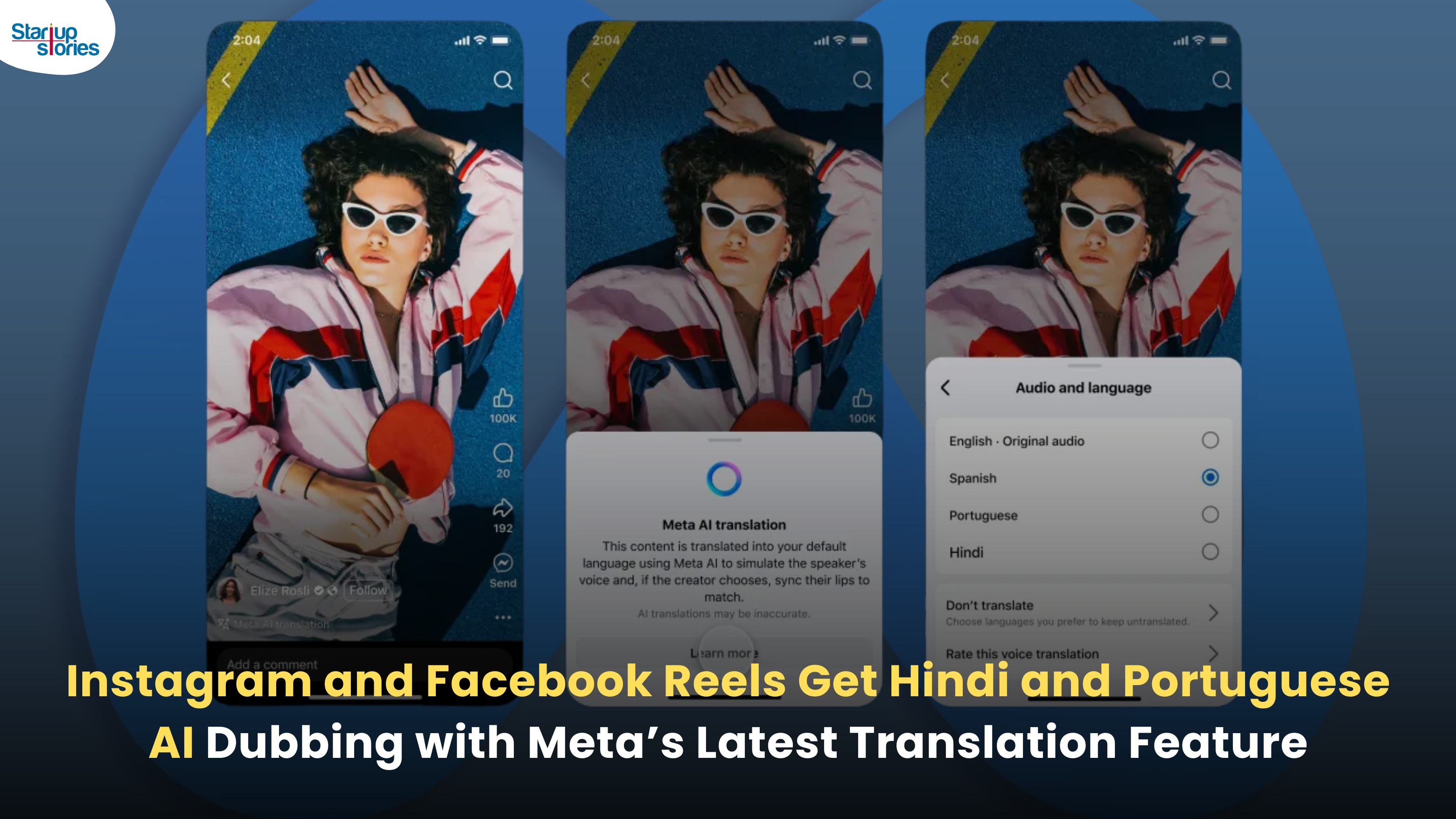Latest News
Truecaller, Google Join Hands To Improve Video Calling App Duo

Leading telecommunication app Truecaller announced some major new features to its Android app. Truecaller had tied up with Google to integrate the tech giant’s video calling app Duo within the Truecaller app.
Apart from announcing Truecaller 8 for Android which gives features like SMS, flash messaging and Truecaller Pay, it also announced its tie up with Google to integrate the Duo video calling.

The company promises high-quality video calling service through Truecaller with the addition of Google Duo. This service will roll out for the apps from the coming next months probably in both iOS and Android. Also, this is a permission-based service, the users can opt in and opt out at any time.
Amit Fulay, Head of Duo at Google said: “Regardless of what platform they are, video calling should work for everybody. Our only aim is to make video calling simple, fast and available to everyone. With this Truecaller integration, we will bring a better video calling experience to millions of new users.”
Recently, Truecaller announced a row of its new features including SMS filter, Flash Messaging, and Truecaller Pay.
SMS filter: The user can instantly see who has sent an SMS and allow it to filter all spam messages.
Flash Messaging: The user can send quick pre-defined messages to any Truecaller user to let them know if you are in distress, you are on your way, your location or that you’ve reached home.
Truecaller Pay: Any Android user in India can now send or receive money securely over their mobile phones. For this, the company had partnered with ICICI bank.
Truecaller also partnered with Airtel to launch “Airtel Truecaller ID” to extend its called ID features to Airtel users who use smartphones. These users will get a Flash SMS about the identity of the number before the call hits the users mobile.
Latest News
Zerodha Reports 23% Profit Decline in FY25 as Revenues Miss Target

Zerodha experienced a challenging FY25, as its revenue fell 11.5% to ₹8,847 crore and net profit dropped 22.9% to ₹4,237 crore. This decline reflects tougher regulatory conditions, lower trading volumes, and increased operational costs in the brokerage market, all of which impacted core earning segments for the company.
Despite these headwinds, Zerodha improved its operating margin to 63.78% and built up significant cash reserves, reporting ₹22,679 crore in bank balances. Salary expenses and director remuneration increased, but disciplined cost controls helped the company maintain profitability and a debt-free balance sheet. The drop in active clients and increased compliance costs further contributed to the profit contraction.
Looking ahead, Zerodha’s resilience is supported by its robust cash position and operational efficiency. Maintaining steady margins, diversifying product offerings, and investing in technology positions the company to withstand future regulatory fluctuations and changing market sentiment reinforcing its status as one of India’s leading brokerage firms.
Latest News
Zoho Pay Debuts as India’s New UPI Challenger, Taking on PhonePe, Paytm, and Google Pay

Zoho Corporation has expanded its fintech portfolio with the launch of Zoho Pay, a UPI-based payments app built to challenge India’s top digital payment giants such as PhonePe, Paytm, and Google Pay. The new app supports peer-to-peer transfers, bill payments, QR-based transactions, and merchant settlements in a streamlined interface. Available as both a standalone app and an integrated feature inside Zoho’s privacy-driven messenger Arattai, Zoho Pay enables users to handle chats and payments in one platform, emphasizing data privacy and Made-in-India innovation.
Through seamless integration with Arattai, Zoho Pay allows users to send or request payments, split expenses, and conduct UPI-based transactions directly in their chat windows. Users can link bank accounts, scan dynamic QR codes, and receive audio confirmations of payments, ensuring speed and security. This design mirrors the simplicity of India’s leading UPI apps but is powered by Zoho’s non-advertising, privacy-first model. The integration aligns with Zoho’s mission to build a self-reliant digital ecosystem, where messaging and money management coexist securely.
In the competitive digital payments market, Zoho Pay differentiates itself through its tight business software integration with apps like Zoho Books, Zoho Payroll, and Zoho Commerce, offering small businesses unified access to payments, billing, and accounting. The company is also expanding its reach with POS devices for merchants featuring UPI QR, card payments, and instant reconciliation tools. With founder Sridhar Vembu’s vision of a ‘Chat + Pay’ ecosystem, Zoho Pay reflects a bold step toward redefining India’s fintech scene with a secure, ad-free, and locally developed alternative to global payment platforms.
Latest News
Meta Expands AI-Powered Reels Translation to Hindi and Portuguese, Enhancing Global Creator Reach

Meta has expanded its AI-powered translation feature for Reels to include Hindi and Portuguese, joining English and Spanish in empowering creators to reach a broader global audience on Instagram and Facebook. Originally launched in August 2025 with support for English and Spanish, this update now allows creators to seamlessly translate and dub their short videos, breaking language barriers across some of the largest Reels markets worldwide. The AI technology mimics the creator’s voice tone and even offers lip-syncing to ensure the translated videos feel natural and engaging for viewers.
This enhancement is especially significant for India, the largest market for Facebook and Instagram, where over 600 million people speak Hindi. Content creators who are not fluent in Hindi can now easily access this vast audience, increasing their reach and engagement across diverse linguistic groups. To maintain transparency, all translated Reels are clearly labeled with “Translated with Meta AI,” and viewers can choose to switch translations on or off based on their preference.
In addition to voice dubbing, Meta is developing features to translate captions and text stickers on Reels, making content more accessible even without sound. These AI translation tools are available free for eligible public Instagram accounts and Facebook creator profiles with over 1,000 followers. This innovation reinforces Meta’s commitment to fostering cross-cultural content sharing and enhancing creators’ ability to connect with audiences around the world through short-form videos.












Pktsmdok
May 27, 2025 at 7:14 pm
Entdecken Sie die besten bewerteten Online-Casinos des Jahres 2025. Vergleichen Sie Boni, Spielauswahl und Vertrauenswürdigkeit der Top-Plattformen für sicheres und lohnendes SpielenCasino-Bonus
what does androgenic mean
June 5, 2025 at 6:41 pm
Steroids can irritate the liner of the stomach by inhibiting prostaglandins –
these are substances that assist shield the abdomen lining.
Oral steroids ought to be taken with meals and
different medicines that also irritate the abdomen, corresponding to nonsteroidal anti-inflammatory medicine (NSAIDs),
avoided. Steroids can improve oil manufacturing by sebaceous glands and make them more prone to an infection. Acne in people who take steroids is most commonly discovered on the chest however can be seen on the back, shoulders, neck,
and face. In rare circumstances, people might have a
critical allergic response to steroids, generally recognized as anaphylaxis.
It can cause a range of severe symptoms and, if left untreated, can be life-threatening.
Additionally, they do not cause notable amounts of water accumulation, reducing
excess weight gain and sustaining optimum blood
viscosity. However, that’s not to say all anabolic steroids are safe,
particularly when purchased illegally on the black market, where merchandise are generally counterfeited.
Bodybuilders also abuse steroids, taking excessive dosages without the supervision of a
physician. All anabolic steroids are types of exogenous testosterone and thus stimulate
lipolysis (fat loss).
Some authorized supplements do have science on their aspect and aren’t completely unsafe.
Your signs could additionally be worse when you’re
mendacity down, because the place places added strain on the affected nerve.
Remission from gout can final for months or years,
however even should you do everything right, it can at all times flare up again. If you’re struggling
to manage your signs despite your finest efforts, cortisone injections
can help. Nutritional/dietary dietary supplements are substances purchased
legally from nutritional stores or via the internet which may be usually taken in combination with other APEDs.
That added pressure interferes with the nerve’s
function and causes an array of disagreeable symptoms.
Discover a chart of topical steroids classified by their efficiency, by each the model names and generic names.
Unfortunately, many patients with gout don’t follow the guidelines given by their doctor and often expertise recurring
flare-ups. Left unmanaged, these can eventually worsen into
gouty arthritis and growths called tophi. If steroids are taken daily,
for long durations of time, they’ll trigger adrenal
gland suppression.
Anabolic steroids are based mostly on the human growth
hormone testosterone. They can be used productively in hormone alternative remedy, or to deal with growth
disorders and different illnesses. Sometimes the immune system doesn’t work accurately, and assaults your body’s own organs, bones,
or tissues.
Most topical steroid packaging accommodates directions
on tips on how to use the topical steroid properly.
If you’re ever doubtful as to how to use your remedy, do not hesitate
to ask either your doctor or nurse or the pharmacist who supplied
it. The probability of unwanted effects occurring
is said to the potency of the preparation, where it’s
used, the condition of the pores and skin on which it’s used and the age of the individual utilizing it.
All these elements might be considered when a prescription is given to deal with eczema.
All steroids might be marked with a use-by date and should not
be used after the time acknowledged. You will normally be given a set period of time in which to make use of the
preparation. Any steroid that continues to be unused
at the finish of a treatment burst shouldn’t be passed on to be used by anybody else.
Steroids in any kind pose a threat if they’re used over an extended time period.
Prednisone and prednisolone are considered off-label medicine for treating
COPD. While no remedy currently exists for COPD, a number of types of medicine can often reduce symptom severity.
Bodybuilders will usually have completely different solutions concerning one of the best steroid for mass, relying
on how their physique responds to different compounds and their private goals.
Some genetically delicate bodybuilders at our clinic have experienced zits vulgaris and male pattern baldness on Anadrol.
Such side effects are attainable due to it being
a DHT-derived compound. Dianabol is a C-17 alpha-alkylated steroid, and thus liver
toxicity is for certain, primarily growing the workload on the organ. Ubrelvy (ubrogepant) tablets are
used for the acute therapy of migraine. Long time period, unregulated use of AASs can affect some of
the similar mind pathways and chemical substances that are affected by other drugs, similar to opiates.
As it isn’t authorized for athletic functions, there is
no authorized management over the standard or use of drugs
sold for this purpose.
References:
what does androgenic mean
Jacquelyn
June 6, 2025 at 6:13 am
The options are so vast, each stack and cycle you undertake
could be completely completely different.
Nevertheless, most steroid customers will turn out to be snug with certain stacks; they’ll
uncover specific combinations that yield the best outcomes, and
they will stick to these plans. Your blood strain, weight, and blood sugar levels might be checked frequently.
As A End Result Of of the risk of osteoporosis, bone density scans are usually beneficial for people who
take steroids for three months or longer.
Hair follicle evaluation supplies a long-term report of
steroid use. It can detect anabolic steroid metabolites for
as a lot as ninety days or extra, relying on hair length.
The steroid medicine will flow into via your bloodstream and may
have an effect on different areas of your body.
However these systemic effects are often so
small that you just won’t discover them.
A cortisone shot might sting when your provider puts the
needle into your skin, but it shouldn’t trigger intense ache.
Your supplier may provide you with a local anesthetic to numb the world across the injection website.
A healthcare provider may give you a cortisone shot during
a normal office go to.
Steroids rapidly reduce inflammation and an overactive immune response.
Corticosteroids successfully suppress the immune system and cut back
irritation. They are helpful for various situations, particularly when prompt therapy is necessary.
Taking decrease dosages over shorter durations will reduce the risk
of unwanted side effects from corticosteroids. Doctors will
always try to prescribe the lowest dosage that will nonetheless
present effective treatment. Corticosteroids have a number of completely different effects on the physique,
meaning they will deal with varied medical situations.
They can cut back irritation, suppress overactive immune system responses,
and help with hormonal imbalances.
Corticosteroids can present substantial relief of signs, however
include the danger of significant unwanted side effects, especially if used long term.
Corticosteroids are extensively used drugs due to their profit.
Their widespread use and lots of antagonistic results place significant significance on their understanding by all healthcare
team members.
You shouldn’t drink any more than the UK
pointers of 14 items per week. You shouldn’t save these items up
to drink all in one go, so attempt to spread your units throughout the week and
have some alcohol-free days. The determination will rely
upon how lengthy you’ve taken them for, what dose
you’re on, and the place in your body you’re having surgery.
Steroids can weaken bones, which is the safest steroid
to use? (Jacquelyn) can lead to a condition often known as osteoporosis.
This situation makes it extra probably that you’ll fracture your bones, generally after very minor falls or bumps.
If you determine to maneuver ahead, educate your
self, cycle responsibly, and never run blind.
Insulin is not a steroid however it nonetheless makes its means
into the steroids list due to its significance and
makes use of in the anabolic progress of muscle tissue.
This peptide hormone is much like HGH because it helps within the constructing of muscle tissue from the amino acids entering the cells.
Insulin instigates biochemical reactions within the muscle that enhance
protein synthesis.
Common train, especially issues that involve your bones carrying
the burden of your body, such as walking, can even help to reduce the risk of getting osteoporosis.
Steroids would possibly have an effect on some medical situations,
similar to diabetes, heart or blood pressure issues, or psychological health issues.
If you have any of these situations, the person treating you
will want to ensure the steroids aren’t making the situation worse.
Frequent steroid injections, more typically than every three or four months,
are not beneficial because of an increased danger of weakening tissues
in the treated area. Steroids are used to deal with a wide range
of conditions in which the body’s protection system malfunctions
and causes tissue injury. Steroids are used as the primary
remedy for sure inflammatory conditions, similar to systemic vasculitis (inflammation of blood vessels) and myositis (inflammation of muscle).
This is recognized as ‘hypoadrenalism’ and causes severe weak
spot and low blood strain. Some individuals with
eczema are concerned about possible unwanted effects once they cease using topical steroids.
Topical steroid withdrawal (TSW) reactions usually tend to occur when stopping treatment after extended, steady use
of upper efficiency topical steroids, for normally greater than a yr.
Folks present process TSW reactions expertise
signs worse than their unique situation. Signs embody pink or darker burning pores and skin (darker than a
person’s ordinary skin color, depending on skin tone) usually
in areas the place they have never had eczema earlier than. Please see our Topical Steroid Withdrawal web page
for more information about TSW.
hedgedoc.digillab.uni-augsburg.de
August 20, 2025 at 4:24 am
dianabol only cycle for beginners
References:
dianabol 50mg cycle (hedgedoc.digillab.uni-augsburg.de)
GO88
November 7, 2025 at 8:43 am
Tham gia cộng đồng game thủ tại Go88 để trải nghiệm các trò chơi bài, poker phổ biến nhất hiện nay.
MM88
November 8, 2025 at 1:57 am
Với giao diện mượt mà và ưu đãi hấp dẫn, MM88 là lựa chọn lý tưởng cho các tín đồ giải trí trực tuyến.
iwin
November 12, 2025 at 12:38 am
iwin – nền tảng game bài đổi thưởng uy tín, nơi bạn có thể thử vận may và tận hưởng nhiều tựa game hấp
MM88
November 22, 2025 at 5:54 am
Khám phá thế giới giải trí trực tuyến đỉnh cao tại MM88, nơi mang đến những trải nghiệm cá cược thể thao và casino sống động.
Kuwin
November 29, 2025 at 9:56 pm
kuwin sở hữu kho game đa dạng từ slot đến trò chơi bài đổi thưởng, mang đến cho bạn những giây phút giải trí tuyệt vời.